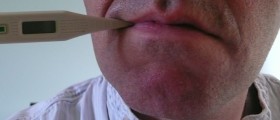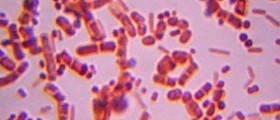
Legionnaires' disease, also known as legionellosis, is a form of pneumonia caused by a specific microorganism belonging to the genus Legionella. This gram negative bacterium can cause serious lung infection and many complications especially in elderly, immunocompromised patients and heavy smokers. In majority of cases the infection develops as a consequence of contracting Legionella pneumophila.
The infection develops after being exposed to bacteria and when they are inhaled. Apart from severe form of the infection, bacteria from the genus Legionella may also cause a milder form of the illness (Pontiac fever). This form of legionellosis withdraws on its own while the other one, the one that affects the lungs, must be treated with antibiotics.
Diagnosing LegionellosisAs for the symptoms and signs, legionellosis is similar to other types of pneumonia. In order to confirm the condition the doctor may perform an urine test and identify Legionella antigens. Furthermore, the doctor performs blood tests, a chest-X-ray (confirms inflammation of the lungs) and test on a sputum sample. CT scan of the brain and spinal tap are not routinely performed, only if there are certain neurological symptoms.Complications of Legionellosis
Infection with Legionella pneumophila may cause serious complications, particularly in vulnerable groups. Some patients develop respiratory failure, in rare cases one may end up with septic shock and there have also been cases of acute kidney failure.
Such complications require proper treatment and they may even cause lethal outcome. They predominantly affect immunocompromised patients and elderly.
Treatment for Legionellosis
Legionella is a bacterium, therefore it can be easily eradicated with antibiotics. The treatment must start as soon as the diagnosis is set. Only this way patients can fully recover and the risk of complications reduces to minimum. Prevention of Legionellosis
Because the bacterium thrives is moist conditions, it can multiply in water systems, pools or even spas. These areas must be kept impeccably clean and should always be properly disinfected.
The greatest risk of catching the infection is by inhaling minuscule droplets of infected water. Huge health risk is associated with evaporative cooling towers. In order to prevent spread of the infection manufacturers of cooling towers pay close attention and take all the measures necessary to avoid occurrence and further distribution of the bacteria. Workers maintaining cooling towers and air conditioning systems may easily contract the infection.
It is essential to pay close attention to people at risk. If there is confirmed infection of legionellosis , people who are heavy smokers, immunocompromised patients, those suffering from chronic lung conditions as well as elderly (people older than the age of 65) are supposed not to come in any kind of contact with the infected individual.

















Your thoughts on this
Loading...